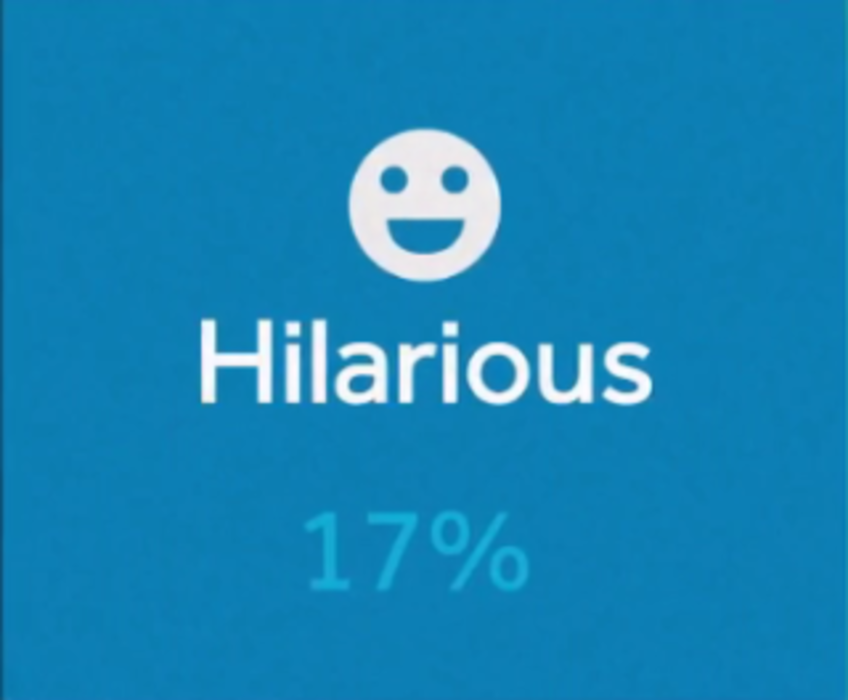Fact: Millions of Americans are tweeting daily about what they’ve watched on television, often using slang, made-up words, regrettable spelling, and dubious grammar. Also fact: Attempting to manually score all those tweets every day is a case study in how to drive a network analyst slowly, or not so slowly, insane.
But beyond the logistics of processing the sheer volume of tweets, the real challenge is doing it in a way that produces some kind of actionable info. Knowing how many people are tweeting about your brand or program is nearly irrelevant without knowing the context—but so is using a simplistic, opaque scoring system.
“Historically, the focus in the space has been on sentiment—designating tweets as ‘positive,’ ‘negative,’ or ‘neutral,’—but what does that really mean?” notes Jared Feldman, cofounder and CEO of Mashwork, parent company of a newly released natural language social TV insights tool called Canvs. [Fun fact: Feldman developed Canvs with his former NYU professor Sam Hui, who now serves as Mashwork’s chief scientific officer. Now that’s education in action.]
Let’s say a viewer of BET’s The Game (a super-popular program that follows the lives, trials, and tribulations of professional football players and their significant others) tweets something along the lines of: “I CAN’T STAND Jason Pitts in The Game. That guy just annoys me!!!!!!!!”
The tone of that tweet is clear. Cut and dried, right? But multiple things are actually happening there. Yes, the tweet is seemingly negative in sentiment—this person doesn’t like a particular character on the show—but he or she is still actively engaging with the program. If a viewer loves to hate a show, that’s not negative sentiment—that’s ratings and social gold.
The opposite is also true—and also potentially quite unfortunate from a marketing perspective when automation gets involved.
“Let’s say you mention Coca-Cola and Pretty Little Liars in the same tweet. Traditionally, that would be interpreted as, ‘This person has an affinity for Coca-Cola and for Pretty Little Liars—but that’s not necessarily valid,” Feldman says. “Because what if this was the tweet: ‘I can’t stand Coke and Pretty Little Liars in the worst effing show on TV.’”
Feldman aims to reframe the conversation by bringing emotion to the table. The goal with Canvs—a play on the concept of canvassing an audience—is to act like a real-time opinion poll that outlines for network execs exactly what the most engaging or important moments are in a particular show. The tool only looks at emotional tweets, rather than tweets or retweets in which people are just sharing links. Reflexive shares aren’t emotional and muddy the insight waters. Canvs then analyzes the natural language used in the reaction tweets to paint a convincing picture of how people truly feel about the content they’ve just consumed combined with other relevant data like demographics, average income, interests, and brand preferences.
In essence, an impossible, and yet possible, real-time focus group of the masses.
“Imagine you’ve got 23,000 people, or whatever, in a room and you ask them what they think of a particular episode,” Feldman says. “This is how they’d respond.”
It’s where the social TV insights space is moving. Just like any marketer out there, networks are looking for actionable data and the ability to create meaningful segments from the social mayhem.
Recent research from Adobe found that while the vast majority of marketers are using social media, a mere 12% said that they’re confident in their ability to actually measure their efforts—so there’s definitely room in the industry for more effective and nuanced analysis tools.
“It’s an unbelievable stat; there’s this enormous thing that’s infiltrated how everyone thinks about media now—and most marketers don’t think they’re doing it right…though it’s easy to understand why when they’re just looking at buzz-numbers,” Feldman says. “The question every network always asks about their show is, ‘How did I do last night?’—but it’s impossible to answer that without really understanding your audience’s true emotional reactions.”








